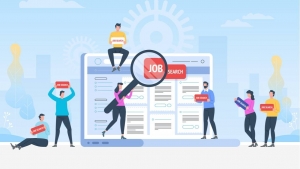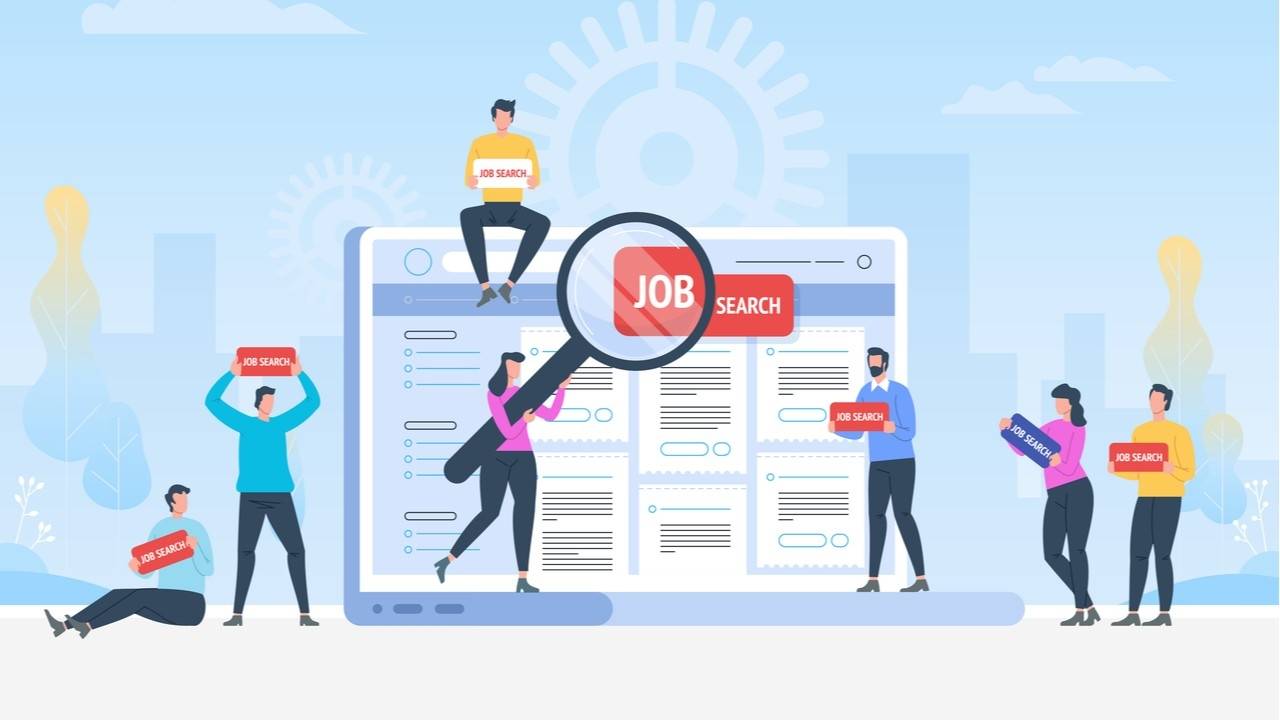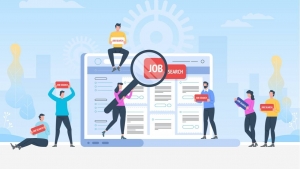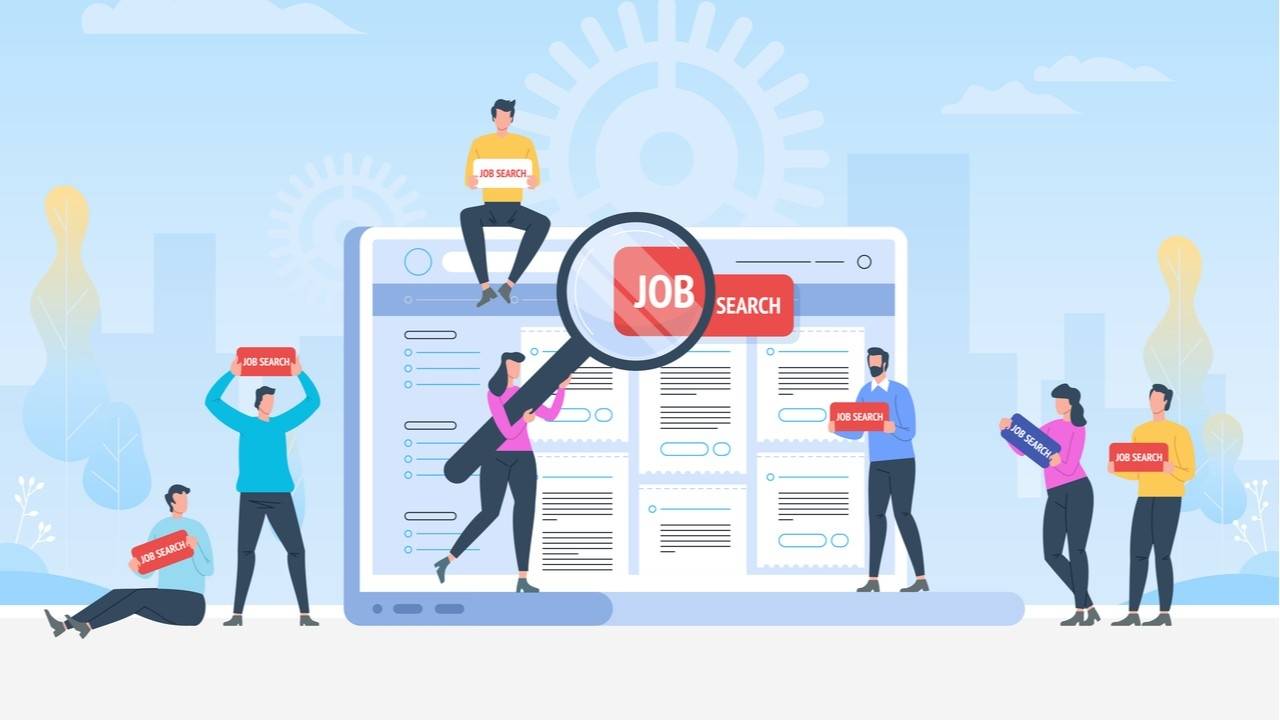
The job market is fiercely competitive, particularly for start-ups seeking to carve out a place amongst established corporations. The talent pool has become global and more discerning, making the importance of attracting and retaining top talent more crucial than ever for the burgeoning start-up. This blog aims to be a comprehensive guide, offering insight into how start-ups can revolutionise their recruitment process to secure the industry's best and brightest.
Understanding the Start-Up Ecosystem
Start-ups are often defined by their agility, willingness to innovate, and potential for exponential growth. However, these characteristics also bring unique challenges in recruitment, such as limited resources and brand recognition. Moreover, company culture holds exceptional value within start-ups, as it often influences employee engagement and company loyalty in an environment where every member plays a critical role.
The start-up ecosystem is driven by a dynamic group of individuals and organisations, each with a fundamental role in nurturing entrepreneurial growth. Entrepreneurs and founders are at the heart of this ecosystem, embodying the drive, vision, and perseverance required to transform ideas into reality. Their cognisance of market needs and their ability to formulate creative solutions is indispensable to both start-up inception and progression.
Defining Your Employer Brand
An employer brand encapsulates a company's identity from the perspective of potential and current employees. It's the narrative that tells candidates why they should work for you. Building a compelling employer brand involves identifying your start-up's USPs and crafting a mission statement that resonates with your ideal candidates. This, combined with a consistent brand voice and visual identity, should be at the forefront of your recruitment efforts.
A well-articulated and genuine employer brand translates into a substantive competitive advantage. Organisations with clear employer branding stand out in the job market and are more likely to draw in job seekers who are not just qualified but also a cultural fit. Beyond this, treating employer branding as a strategic HR function ensures the brand aligns with business objectives, thus making it a powerful strategic lever.
Innovative Recruitment Strategies
Recruitment, historically grounded in personal networks and paper-based advertising, has been revolutionised by advancements in technology. The digital age has ushered in a new era where online job boards, applicant tracking systems, and professional networking sites such as LinkedIn dominate the industry. The transition to innovative strategies has been driven by the need for efficiency, precision, and scalability. Current trends, like remote hiring and a focus on employer branding, highlight the dynamic nature of recruitment in the contemporary business landscape.
Recruitment strategies have evolved with the advent of social media and digital networking. LinkedIn can be a treasure trove for professional connections, while platforms like Instagram and Facebook can channel your company culture to a wider audience. Employee referral programmes incentivise existing staff to recommend suitable candidates, bringing trust and a higher likelihood of cultural fit. Additionally, engaging with industry events and educational institutions can uncover fresh talent aligned with your start-up's ethos.
Crafting Compelling Job Descriptions
Job descriptions are the gateway to attracting candidates, thus; clarity in conveying role expectations and specificity in responsibilities is crucial. Equally important is to embed your company values within the listing and use inclusive language to cast a wider net for diverse talents who can enrich your start-up's innovation capacity.
The crafting of a job description is akin to a fine art, requiring careful consideration of its various components. A clear job title avoids misunderstandings, while an engaging company narrative can showcase the ethos of an organisation. An articulate role summary provides a glimpse into the position's essence, and well-defined responsibilities offer clarity. A rundown of skills and qualifications lays the groundwork for candidate expectations, and an insight into desired characteristics helps in assessing cultural fit. Transparency in discussing salary and benefits stands as a contentious yet vital aspect, and clear application instructions round off the jobdescription, providing a smooth pathway for potential applicants.
The Interview Process
The interview process should not only assess the technical skills of candidates but also reflect cultural compatibility. Incorporating practical tasks can provide a clearer picture of a candidate’s capabilities. Regardless of the outcome, ensuring a positive experience leaves a lasting impression and maintains your company's positive image in the job market.
Offering Competitive Compensation and Benefits
Competitive compensation and benefits are cornerstones of a successful business, serving not only as a tool for recruitment but also as a mechanism for employee satisfaction and retention. In this informative blog, we will dissect the complexities of effectively structuring compensation and benefits from an employer's perspective. Specifically tailored for business leaders and HR professionals, our objective is to provide a comprehensive guide that navigates the intricate landscape of employee rewards.
Understanding market rates is essential to construct competitive compensation packages that attract top talent without jeopardising financial sustainability. In addition to monetary benefits, offering flexible workings arrangements, professional development opportunities, and unique perks aligned with your culture can also be highly compelling.
A strategic approach to compensation and benefits is instrumental in fostering a motivated workforce. Well-structured rewards not only create a culture of recognition and appreciation but also significantly reduce turnover rates by ensuring that employees feel valued and fairly compensated.
Fostering Growth and Development Opportunities
For many top talents, the ability to grow within a company is a significant drawcard. Establish a framework for professional development that encourages innovation and ownership among employees, underpinning career progression and personal growth.
Professional growth and development in the workplace are vitally important aspects of any successful business. For employees, these opportunities represent pathways to job satisfaction and career progression, leading to a more fulfilling work experience. Employers also stand to benefit, as an environment rich in growth prospects often translates to heightened productivity and employee retention, reducing the costs associated with high turnover. Despite its proven advantages, the current landscape of professional development is competitive, with diverse approaches to nurturing talent.
Building a Supportive Work Environment
Strike an optimal balance between work and personal life to enhance job satisfaction. Mental health support, cultivating open communication, and encouraging collaboration can all contribute to a healthy work environment and high employee retention rates.
A supportive culture is critical for fostering growth. Encouraging employees to learn not only from successes but also from failures, and recognising their achievements, instils a growth mindset that benefits both the individual and the company. Leadership's role is pivotal in this respect; by embodying development-values and providing coaching, leaders can significantly influence and nurture a culture that places a premium on progress and learning.
Leveraging Technology in Recruitment
Technological advancements such as ATS, recruitment software, as well as AI and machine learning, can significantly improve efficiency and effectiveness in the recruitment process. Not only do these tools streamline hiring, but they also augment candidate engagement and sourcing.
The incorporation of technology in recruitment yields myriad benefits. Efficiency is enhanced via the automation of menial tasks, thus enabling talent acquisition teams to focus on more strategic responsibilities. Additionally, the quality of hires improves through data-driven insights that allow for a more objective candidate evaluation process, reducing unconscious bias. The culmination of these advantages leads to a cost-effective recruitment model that acts to optimize both time and financial resources.
Legal Considerations and Compliance
Recruitment is not just about finding the right fit; it's also about compliance with employment laws. Ensuring practices are non-discriminatory and keeping abreast of legislation changes is a must for any responsible employer.
The recruitment field, being highly regulated, demands a robust understanding of legal components to ensure adherence to various laws and guidelines. Key areas such as employment law, data protection, anti-discrimination measures, and industry-specific regulations will be discussed to equip recruitment firms with the knowledge necessary for navigating this complex legal domain.
Measuring Recruitment Success
To continually improve the hiring process, start-ups must define and assess clear metrics of recruitment success. Analysing trends and feedback from new hires and unsuccessful candidates provides invaluable insights into further refining recruitment strategies.
In the highly competitive business landscape, the role of effective recruitment is pivotal to organisational success. With talent being a key driver of innovation and growth, mastering the art of talent acquisition can provide a significant competitive edge. However, organisations often grapple with understanding whether their hiring efforts yield the desired outcomes. This blog aims to demystify the complexities of measuring recruitment success, offering a practical framework to assess and improve hiring strategies.
About Inspire People
We believe that technology has the power to change the world for the better and we love working with businesses whose technology or purpose has a positive impact. We help businesses that share our vision access the people, resources and strategic advice they need to achieve their digital transformation goals
Our service is designed to accelerate your digital growth. We created our offer in response to emerging challenges in an uncertain business landscape: a blend of Advisory, Talent and Project led services that will help you achieve your strategic aims and deliver more for your employees and customers. We’ll connect you to rare specialist talent, experts and insight to help you navigate your biggest challenges and remain competitive in a changed world.
Get in touch today to discover how working with us could help you innovate and grow.
Speak to our expert team on +44(0)20 7871 8550 or email hello@inspirepeople.net
The Impact Of AI On Recruitment
What is AI in Recruitment? The Fundamentals
Artificial intelligence, or “AI”, is a machine’s ability to perform cognitive functions similar to that of the human mind, such as perceiving, learning, and reasoning. There are many different types of artificial intelligence in the modern world and many sub-sections in the AI landscape.
For instance, machine learning (ML) systems can learn and adapt using data, without having to follow explicit instructions. Natural Language Processing (NLP) solutions can understand and categorise written and spoken language and respond to human commands.
In the tech recruitment landscape, various forms of AI can streamline and automate aspects of the recruitment process. AI can help recruiters source candidates, by rapidly searching through databases of information, and assist in analysing CVs and job applications.
Currently, 88% of companies worldwide are using AI in some form for the HR and recruitment process, and adoption is growing at a rapid pace.
Types of AI Tools in Recruitment
As new forms of AI emerge in the workplace the potential of AI in recruitment is evolving. While there are many different forms of AI available to tech recruiters, some of the most common types used in today’s landscape include:
• Screening software: Screening software, such as ATS (Applicant Tracking Systems) can assess CVs and look for candidates that match a position’s requirements. They can scan for keywords, specific skills, or tech certifications, and rank resumes based on relevance.
• Online interviewing tools: AI interviewing tools can help recruiters collect more data during a candidate interview. AI software can automatically analyse speech patterns, body language, and facial expressions, to tell teams more about a candidate’s behaviour.
• Outreach tools: Automated outreach tools allow businesses to send messages and information to numerous candidates at once. With one click, you can send out links, surveys, and job offers to a variety of candidates, or schedule an interview.
• Chatbots: 41% of companies now use chatbots as part of the recruitment process, to answer candidate questions, provide feedback on the interview process, or keep candidates informed about the progress of their application.
The Benefits of AI in Hiring and Recruitment
AI may still be in its early stages within the tech recruitment landscape, but it’s already demonstrating a host of potential benefits. Early adopters of AI-powered recruitment software say the technology has reduced their cost per screen by 75%, and their turnover by 35%
When used to support and augment recruitment teams, artificial intelligence can improve efficiency, performance, and productivity. The biggest benefits include:
Efficiency and Time Savings
Recruitment is a lengthy and time-consuming process, which often involves a lot of manual work. The recruitment role epitomises the concept of searching for a needle in a haystack. Sorting through candidates and screening resumes takes a lot of effort, with the average recruiter spending up to 30 hours per week on administrative tasks alone.
AI tools in the tech recruitment space can automate a number of repetitive tasks, saving crucial time. They can sort through thousands of resumes in an instant, and identify qualified candidates. Some tools can respond to candidate questions instantly, and even help schedule interviews based on shared calendar information.
This helps HR teams spend more of their time on strategic tasks, such as connecting with candidates, assessing cultural fit, and promoting an employer brand.
Improved Candidate Matching
The best tech recruiters are becoming increasingly data-driven. Rather than shortlisting candidates based on gut feeling, they analyse crucial information about each candidate, to determine a candidate’s capacity to thrive in a specific role.
AI solutions can assist with this process. They can process vast amounts of information, and help recruiters determine which candidates have the right skills, experience, and characteristics for a position. Screening tools can even rank candidates based on their proficiency for a role.
This also saves recruiters time comparing candidate resumes and creating shortlists for business leaders to assess. Some AI tools can even help tech recruiters choose candidates who are more likely to fit well into a company’s culture, reducing the risk of rapid turnover.
Diversity and Inclusion
Though recruiters and businesses are becoming more aware of the impact of bias in the hiring process, biases, and preconceptions can sometimes creep into the recruitment process. They can influence tech hiring decisions, prompting companies to prioritise/prioritize candidates based on factors that aren’t relevant, such as race, age, or gender.
79% of HR professionals admit that unconscious biases influence recruitment-related decisions. This results in poor hiring choices and can damage a company’s diversity.
When utilised correctly, AI tools can help to counteract bias reducing subjectivity in the hiring process.
AI can use standardised strategies to assess candidates based on the most relevant factors, such as skills and experience. It can eliminate subjective factors from the recruitment process, leading to a more diverse, and equitable hiring strategy.
The Drawbacks and Ethical Considerations
As valuable as AI can be in the recruitment strategy, it’s not without its issues. Though AI algorithms are becoming more advanced, they make mistakes. They can overlook important data, adopt the biases of the humans that train them, and even present privacy and security issues.
When using AI in the tech recruitment process, innovators need to be aware of:
Bias and Fairness
When used correctly, AI can help to reduce biases in the recruitment process. However, it’s also subject to bias itself. Bias in AI recruiting has become a major point of discussion in recent years, as AI systems are often influenced by the people who train and build them.
If the data fed to an AI solution is biased, the system itself becomes less objective. For instance, a technician might provide a screening tool with a set of resumes to train it on what features to look for in a candidate. If all of those resumes are for men, the AI tool would be more likely to look for male candidates when creating shortlists.
The issues with AI bias have created significant controversy over the years. Some candidates have even sued companies, saying that they were rejected from a role based on race, age, or disabilities.
Data Privacy
AI is powered by data. To create a powerful and effective AI system, tech leaders need to provide an algorithm with huge volumes of data to learn from. Unfortunately, this can lead to issues with data privacy regulations.
Companies might use personal candidate data to help train an AI system to look for specific information about future candidates. They may find systems hold or store information for too long, or use it in unethical ways.
To comply with data protection regulations, such as GDPR, businesses using AI in recruitment need to ensure they understand where data is stored, how it is used, and which data is processed by their technology. Many companies have yet to put proper data safeguards in place, which could lead to data breaches, fines, and reputational damage.
Transparency and Accountability
As AI is still a relatively new concept for many recruitment/search companies, it isn’t always easy to determine how and why certain systems make specific decisions. This has led to an increased focus from ethical AI regulators on “explain ability”. Experts in the tech recruitment/search companies need to be able to explain why their AI systems work in a specific way.
Even if an AI solution is responsible for screening and shortlisting candidates, the recruitment company is still accountable if something goes wrong. When working with AI solutions, recruiters and business leaders need to determine how transparent the AI decisions are, and what measures are being taken to mitigate bias.
This isn’t always simple for those who don’t have a deep existing knowledge of the AI landscape and how certain algorithms work.
The Human Element in AI-Enabled Hiring
Perhaps the biggest mistake companies make when implementing AI into the recruitment process is assuming that intelligent tools can completely eliminate the need for human experts. AI is a resource, capable of augmenting and supporting human beings.
The ideal AI-enabled hiring process will use intelligence to complement human expertise, not replace tech recruiters from the process.
Ultimately, in the world of talent acquisition, the human touch still plays a vital role in a successful recruitment process. While automation and AI can revolutionise various aspects of hiring, the importance of empathy and understanding provided by humans is paramount.
56% of candidates say they believe AI should never make hiring decisions without human input. After all, it’s the human experience and empathy of an expert recruiter that leads to more effective choices. Empathy allows recruiters to understand a candidate’s motivations, challenges, and unique circumstances, and deliver a more powerful candidate experience.
Because they empathise with candidates, tech recruiters can address their concerns throughout the hiring journey, tailor the experience to their needs, and provide relevant guidance. This leads to a stronger employer brand and deeper connections between employers and candidates.
Moreover, human interactions throughout the recruitment process address a candidate’s need for individualised support and personalised attention.
While technology can streamline aspects of the talent acquisition process, it lacks the nuanced understanding and emotional intelligence human beings possess. The personalised approach recruiters bring to the process helps candidates feel more connected to the organisation, increasing their chances of accepting job offers.
What’s more, it also enables recruiters to properly assess cultural fit, and the potential a tech candidate has for long-term success within a company.
The Future of AI in Recruiting and Hiring
While AI will never fully eliminate the need for human input during the recruitment process, innovations in the AI world are introducing new ways to augment and enhance hiring strategies. As mentioned previously, AI systems are now evolving at an incredible rate.
The rise of more advanced machine learning models and even generative AI is leading to new opportunities for tech recruiters to boost efficiency and productivity.
Emerging trends in the industry include:
• Voicebots: Evolutions in natural language processing and understanding are leading to the development of voicebots that can help screen candidates. They can rapidly capture information, respond to candidate questions, and capture data for recruitment teams.
• Interview scheduling: Modern AI solutions can help to improve the scheduling process. They can use calendar information and data about time zones to suggest potential interview times that work for both candidates and recruiters, reducing administrative work.
• AI video interviewing: Used in the video interview process, AI solutions can help recruiters identify desirable characteristics based on traits like a candidate’s pacing, eye contact, and body language. They can also help improve clarity, by transcribing spoken content.
• Gamified assessments: With AI, companies can create unique gamified assessments to help detect a candidate’s proficiency in certain areas. AI solutions can evaluate a candidate’s performance in certain areas and score their skills in a standardised format for recruiters.
As AI continues to evolve, it will undoubtedly streamline a number of tasks in the recruitment process, from sourcing candidates to assessing their skills. However, no matter how advanced this technology becomes, it will always be crucial to include human beings in any decision-making.
Preparing for an AI-Driven Future: Best Practices
Though there are still challenges to overcome in the world of AI recruitment, it seems likely that intelligent tools will play a greater role in the hiring process going forward.
Already, 92% of HR professionals believe AI is helping them to save time on administrative tasks.
However, companies planning on using AI will need to ensure they have the right strategy in place to avoid potential biases and issues.
When leveraging AI in the tech recruitment landscape, consider the following:
1. Focus on what AI Does Best
AI isn’t a catch-all solution for all recruitment issues. Different AI tools have different use cases, but fundamentally, the technology is most effective at managing and assessing data. AI shouldn’t be used to make decisions that require the ethical and empathetic input of a human being.
Instead, companies should use AI to empower and augment recruitment experts. This could mean automating repetitive tasks, like answering candidate questions or scanning through CVs for specific skills or keywords.
AI is fantastic at streamlining time-consuming, mundane tasks, such as scheduling interviews, identifying skills gaps among current employees, or assessing applicant materials. Human beings, on the other hand, are best at communication, empathetic assessment, and creativity.
2. Be Transparent
Transparency is crucial for any tech company using AI in the recruitment process. As new laws and regulations are introduced to govern the fair use of AI, companies will need to ensure they’re adhering to the laws in their countries.
A growing number of local governments now require companies to tell applicants when they’re using AI for hiring. Most of these laws also require recruiters to ask for consent from candidates if they’re going to use their data for training purposes.
Even if your business isn’t subject to certain AI laws yet, transparency can help to improve your employer brand and put candidates at ease. Reassuring candidates that they will maintain control over their data paves the foundations for a positive relationship, built on trust.
3. Maintain Hiring Etiquette When Using AI
One of the biggest complaints both candidates and recruiters have about AI is that it can dehumanise the hiring process. That’s why it’s so important to think about hiring etiquette throughout the recruitment journey.
It may be fine to use AI’s capabilities to reduce administrative tasks during the early stages of the tech recruitment process. For instance, you could use AI to rapidly respond to candidates and let them know you’ve received their application.
However, companies shouldn’t depend on AI to interact with candidates in the later stages of the hiring journey. Personalised and authentic communication with human beings is still essential to building strong relationships and positive candidate experiences.
4. Understand the Drawbacks and Limitations of AI
When used properly, AI can help with a lot of components in the recruitment process. It can help to remove bias when filtering through candidates, and streamline repetitive tasks. However, there are also dangers to relying on AI too much in your hiring strategy.
For instance, AI has been proven to exhibit bias in the past, as a result of the information engineers feed into the algorithms. It can exclude specific races or genders from the hiring process, simply because it hasn’t been exposed to enough data about different people.
Additionally, AI can store and use data in a way that’s considered unethical, or dangerous. With this in mind, tech companies must ensure they’re conducting frequent quality control tests, to measure the outcomes of using AI tools against their DEI goals.
5. Test and Readjust Regularly
AI is constantly evolving and changing. If your AI recruitment software fails to find candidates in the tech landscape that match your needs, it’s unlikely that the number of valuable candidates has suddenly dropped. Instead, there’s a good chance your AI solutions need adjustment, or an experienced recruiter is a better option because of their connections.
Even if you are finding excellent candidates with the help of AI tools, it’s worth conducting control tests at least a few times each year. Companies can perform human reviews of a randomised set of resumes for a recently filled role, to determine whether candidates are being missed out.
Human beings will be more able to identify important factors that contribute to the success of an employee in your business, such as cultural fit.
The Growing Impact of AI in Recruitment
It’s impossible to ignore the growing presence of artificial intelligence in the modern recruitment world. AI certainly has a number of benefits to offer tech recruiters and companies in search of top talent. It can streamline numerous administrative tasks and save teams significant time and effort in finding and connecting with candidates.
However, AI recruiting tools won’t remove the need for human recruiters. Effective talent acquisition relies on the experience, expertise, and empathy offered by human beings. Companies embracing AI for the future of recruitment need to remember these tools are only suitable for augmenting and supporting recruitment teams.
What’s more, it’s crucial for businesses to recognise the importance of using AI responsibly. There are various risks and dangers involved with relying too heavily on AI in the recruitment process. Business leaders and recruiters must ensure their use of AI doesn’t lead to bias, unethical practices, or issues with privacy and data security.
If you’re planning on using AI recruitment tools, start by improving your AI knowledge, learning as much as you can about the landscape, and building comprehensive strategies for success.
AI can be a powerful tool for tech hiring experts – but only when it’s used with care.
About Inspire People
We believe that technology has the power to change the world for the better and we love working with businesses whose technology or purpose has a positive impact. We help businesses that share our vision access the people, resources and strategic advice they need to achieve their digital transformation goals
Our service is designed to accelerate your digital growth. We created our offer in response to emerging challenges in an uncertain business landscape: a blend of Advisory, Talent and Project led services that will help you achieve your strategic aims and deliver more for your employees and customers. We’ll connect you to rare specialist talent, experts and insight to help you navigate your biggest challenges and remain competitive in a changed world.
Get in touch today to discover how working with us could help you innovate and grow.
Speak to our expert team on +44(0)20 7871 8550 or email hello@inspirepeople.net
The quality of your CV can mean the difference between being stuck in a role with no prospects or being offered a great new position.
Your CV is still the first thing clients ask for and will be the decider between getting an interview and being left out of the recruitment process.
The CV has been around for hundreds of years, and over time it has changed and evolved with the world of work.
As IT recruiters, we have seen the evolution of the CV, and today we are sharing some invaluable top tips to ensure you get on the radar of the best IT employers.
The Purpose of a CV for Employers
Let’s start by thinking about what function your CV serves for employers.
For a start, we should point out that many IT employers are pushed for time, and they are looking for shortcuts in their recruitment process – they want it spelt out to them that you are the candidate they are looking for.
So to fit this requirement, your CV should be highly tailored to the employer or hiring manager that is looking after the recruitment process.
Aim to find out where possible exactly who to address your CV and cover letter to – this makes it stand out more than letters simply addressed ‘Dear Sir/Madam’ and tailor your CV and cover letter specifically to the company and the role you are applying for.
All too often, IT candidates send generic CVs or cover letters – these are usually the candidates who don’t get past the first round of the recruitment process.
In today’s competition-led job market, your CV needs to do the following:
Immediately capture the attention of the recruiter or employer
Illustrate how your skills and abilities clearly relate to the job description
Show how much of a culture fit you are to the organisation
Increase your chance of getting a first interview.
Your CV should be a succinct summary of why you are the ideal candidate for this role.
So let’s look at what makes the ideal IT CV.
Make Sure it’s Relevant
Many people include skills, knowledge and experience on their CV that, although they might be proud of, it is not relevant to this company or role.
Remember the following tips when thinking about what to include in your CV:
- Make sure your CV includes everything the job advert specifies.
- Use similar terminology to that found in the job advert to strike a connection with the employer or hiring manager.
- If there are any areas that you don’t have the required skills, address this by demonstrating your desire to learn, which you can back up with previous examples of learning a new skill for a previous role.
Keep your CV short, and to the point. The ideal length is two pages, but it can be longer if you have lots of relevant experience.
The following are what to include in your CV to make sure it ticks all the right boxes.
Sections to Include
Remembering always to keep it relevant and avoid unnecessarily long explanations or details, structure your CV using these sections.
- Personal details – make sure these are up to date, with your current address, professional email address and correct phone number.
- Your personal statement – this can be a short couple of paragraphs at the top of your CV, which summarises in short why you have the skills and experience which make you an ideal candidate for this role.
- Your work experience – include all of your relevant work experience, which demonstrates your ability to thrive in a similar role. Include the name of the organisation, the time you held the position for and your job title.
- Achievements – give specific examples of your previous achievement, which will allow you to excel in the role you are applying for.
- Education – only include educational achievements which are relevant to the job.
Finally, let’s look at some tips to remember to create an eye-catching IT CV.
CV Top Tips
Even with the right relevant information, your CV will still need to perform in other ways to catch the attention of the hiring manager.
The following are our top tips to get your CV noticed:
Check and double-check that your contact details are up to date – have you changed your mobile number since you created your CV?
Use a professional email address without nicknames or slang in it – if you haven’t got one, create one.
Include a link to your LinkedIn profile – the hiring manager will probably look you up online anyway, you might as well direct them to where they can find your LinkedIn profile.
Don’t include a picture on your CV – it’s an outdated concept and adds no relevance to the recruitment process.
Run your CV through spell check before you print or send it. Also, have someone – a friend or a recruiter - to check for spelling and grammar mistakes.
Choose a font that looks good, but that is clear and easy to read. Make sure the font isn’t too large or too small. Don’t use lots of different sizes or styles of font – simple is best.
Avoid cliches such as ‘go-getter’, ‘think outside the box’ and ‘multi-tasker’ when describing yourself. If you are struggling writing your CV.
Finally, let’s look at the importance of the cover letter to go with your CV.
Your Cover Letter
We often get asked whether you should include a cover letter or not – our answer is always yes!
Your cover letter is another opportunity to show you’ve researched the business and made sure that you’re appropriate for the role. Within your cover letter, you can go beyond the skills and education outlined in your CV to show that you are familiar with the company and explain a little more about yourself and why you want to apply for their vacancy.
Finally
Your CV is your chance to introduce yourself to an IT recruitment company or hiring manager in a meaningful way.
If you can show the person looking at your CV that you match the job description as closely as possible, then you’ll get the interview.
About Inspire People
We believe that technology has the power to change the world for the better and we love working with businesses whose technology or purpose has a positive impact. We help businesses that share our vision access the people, resources and strategic advice they need to achieve their digital transformation goals.
Our service is designed to accelerate your digital growth. We created our offer in response to emerging challenges in an uncertain business landscape: a blend of Advisory, Talent and Project led services that will help you achieve your strategic aims and deliver more for your employees and customers. We’ll connect you to rare specialist talent, experts and insight to help you navigate your biggest challenges and remain competitive in a changed world.
Get in touch today to discover how working with us could help you innovate and grow.
Speak to our expert team on +44(0)20 7871 8550 or email hello@inspirepeople.net
Naturally, we all go through periods of having exciting projects on at work which make us fall in love with our roles again; and times when finding motivation is harder. But if the thought of the end of the weekend and another week in work fills you with dread, this could be a sign that something is seriously wrong. Either you’ve outgrown your current role, your workplace has become toxic, or you realise that your passions lie elsewhere in a different position or with a new company with different values. There are some signs to look out for which indicate that it’s time to look for a new job.
Deciding on a career move can be a daunting thing, and that’s why many people try to ignore the warning signs that they should move on.
Today, we share the six undeniable signs it’s time to look for a new job (and how to find one).
1. You Have Stopped Enjoying Going to Work
There can be many reasons people are reluctant to leave the house in the morning, from a commute that is regularly filled with traffic to a lengthy train journey. But generally, travelling to work should not be a time where you dread the minutes counting down until your morning start time. Have you found yourself stopping off for a coffee to delay getting into the office; have you started taking the longer route to work; does the thought of work in the morning keep you from sleeping at night?
Of course, many more of us are working from home now, and so the physical act of going to work might soon become a thing of the past in many roles. But this feeling of dread can become present in morning Zoom meetings, when you’re on a conference call or any time work-related messages pop-up on your screen. A sense of dread when you think about your job is not normal – if this is happening to you, it’s time to make a change.
2. You Feel Disconnected From Your Role
High employee engagement is a characteristic of all excellent employers. Great tech employers will ensure that you have the right amount of work to do; that you’re not overworked or frequently find yourself with few tasks and unsure what you should be doing. You should feel a passion and drive for your role, and a connection to your team and your employer which makes you want to give your best to the job – it was probably there when you applied for this position.
But over time, inadequate management can lead to employees feeling disconnected and then eventually stop caring. It is hard to find enthusiasm for your role when you have become disconnected. Will you ever trust that your employer truly cares about you even if things change in the short-term?
3. You are Taking Extra Sick Days
Taking extra sick days, or taking holidays simply to get away from your job is a sign that something is wrong. It is estimated that 12.7% of all sick days are taken due to mental health problems, which can often be attributed to your current role in the first place.
If your mental health is being affected due to your job, first speak to your manager. They have a duty of care to you to ensure that your position is not causing you harm. Sadly, if the problems are out of your manager’s control, and they continue, it might be time to look for an employer who has an excellent wellbeing reputation.
4. You Don’t Get on With Your Boss (or Your Colleagues)
Having a great relationship with your boss and your colleagues is never a given in any role – it’s always a nice added bonus when you find a role you love, and you get on with your team. But negative relationships with the people you work with every day can quickly become draining, and they can turn a once dream job into a nightmare situation.
There should always be avenues you can explore before it gets as serious as leaving for a different company, but sometimes that’s what it takes. Toxic workplaces are sadly more common than you might think, and although your job might look great on paper, if your boss regularly puts you down, and the atmosphere in the workplace is continually negative and is holding you back from success in your job role and your whole career, it’s time to find a company where you not only feel fulfilled but also happy.
5. You’re Being Underpaid
48% of employees feel that they are underpaid for the work they do – does this sound familiar? When you start a job, the expectations might have been clear, but what commonly happens in [IT] workplaces is that over time, and as you become more experienced within the organisation, you are tasked with more and more duties.
And your remuneration rarely increases with the amount of extra work you are now expected to do. It might be a simple case of your manager not realising how much extra outside of your role you are taking on – but this again is poor management on their part.
Suppose you are increasingly given extra tasks or are performing managerial duties and your employer tells you that you are not going to be paid any extra for it. In that case, this is a sign that your employer is taking advantage of you.
Not all IT employers behave like this – now should be the time to find one who doesn’t.
6. You Feel Undervalued
Aside from being paid a fair wage for the work you do, it is also important that you feel emotionally valued and supported by your manager and your colleagues.
Signs that you are being undervalued by your current employer include:
- your work is overlooked,
- your performance and pay reviews are continually pushed back,
- you’re not trusted to have autonomy in your role,
- those around you are promoted, and you get left behind.
Being undervalued can be a sign that your current employer is not going to support you in your career and that things are unlikely to change unless the entire company has a management shake-up – but you don’t have to wait for this to happen.
Next Steps
Many people stay in roles that are making them severely unhappy and impacting on their mental health because they believe there is no other option for them.
The truth is there are always other options; you just might not know where to find them – and that’s where we come in.
About Inspire People
We believe that technology has the power to change the world for the better and we love working with businesses whose technology or purpose has a positive impact. We help businesses that share our vision access the people, resources and strategic advice they need to achieve their digital transformation goals.
Our service is designed to accelerate your digital growth. We created our offer in response to emerging challenges in an uncertain business landscape: a blend of Advisory, Talent and Project led services that will help you achieve your strategic aims and deliver more for your employees and customers. We’ll connect you to rare specialist talent, experts and insight to help you navigate your biggest challenges and remain competitive in a changed world.
Get in touch today to discover how working with us could help you innovate and grow.
Speak to our expert team on +44(0)20 7871 8550 or email hello@inspirepeople.net
6 Effective Employee Retention Strategies
As we are now living in a world that has been changed by the pandemic, your employee retention strategy must be better than ever.
A pre-pandemic Retention Report by the Work Institue (2019) found that “one in three workers would voluntarily leave their job by 2023”. And this has only increased due to significant shifts in the market due to Covid-19.
The effects of the pandemic are going to be felt in tech organisations for years to come, and so employee retention needs to be a key focus in order to ensure you are keeping your team engaged and satisfied in their roles.
Hiring for replacement team members is not something any tech organisation wants to be doing right now, and so an excellent employee retention strategy is essential.
The following 8 strategies will help.
1. Discover Who You’re Overlooking
To ensure you are providing excellent leadership for your entire team and making them feel valued, first, it is essential that you find out if you are overlooking anyone in your team.
IT teams will naturally include individuals with all manner of skills, experience and personality types.
But in most tech teams, there will also be team members who shine brighter than others – extroverts tend to get noticed more than introverts, some team members are more likely to speak up if they have a problem whereas others will try to work through challenges on their own.
As a leader, it is essential that everyone is getting the right amount of support that they need and that you are not overlooking anyone.
Tech leaders will naturally look to middle managers and other higher-profile employees, but to be a great leader, you must ensure the highest level of employee retention – remember that each and every team member must feel valued and supported.
2. Create Unlimited Opportunities for Growth
According to a recent LinkedIn Workforce Learning Report, 93% of employees would stay longer with their employer if they invested more in developing their careers.
Many IT employers will get to the point where they have a great team in place and think that their job is ‘done’.
But continual training and development is a key part of every employee retention strategy, and we find that talented candidates who look for new IT roles often cite a desire to develop themselves and their career further as a reason for leaving.
No-one wants to be stuck in a role where they feel as though progression is an unlikely possibility.
So invest in robust training and development for your team – it can be anything from personal development training to allowing them time to learn new technical skills.
3. Demonstrate Excellent Values and Ethics
The most desirable IT employees are looking for employers with impressive values and ethics.
And this has been accelerated by the pandemic. We are all thinking much more about what is really important to us, and working for a company they believe in is high on every IT employee’s list of priorities.
IT employees are more empowered than ever, with social media and online review culture creating an environment where the need to be honest and transparent is more crucial than ever.
How active is your company at demonstrating your values and ethics? Do you champion diversity and inclusion? Are you financially transparent?
Fail to demonstrate excellent values, and you risk losing your employees to a more ethical company.
4. Give Employees a Purpose
It is not enough to give employees a fair remuneration package – employees are increasingly looking for a greater sense of purpose in their work.
The best way to find out if your employees feel a sense of meaning and purpose in their work is to talk to them.
Ask them what is important to them in their roles, and make any alterations you can to help them feel a greater sense of purpose. This could involve introducing tools to make their jobs easier, and thus, more valued, or working together to improve your products or services to give greater customer satisfaction.
And create a mission statement which helps employees to understand how their work positively impacts the world.
5. Enhance Your Employer Brand
Your employer brand is the thread that links employees to the organisation – all employees want to work for a company which they feel aligned to.
Look closely at what your competitors are doing – if you slip in terms of promoting and maintaining an excellent employer brand, this gives employees the opportunity to look elsewhere and to be tempted to leave to work for a brand with a better reputation and culture.
Your digital footprint is key in creating a strong employer brand which your employees will feel proud to be a part of.
Think about what you post and how often. IT employees like to see that their employer is actively engaged in current IT topics, is invested in the wellbeing of the team and is a transparent and communicative employer.
Get your employees involved in team strengthening events, use your social media to champion your current employees – celebrate birthdays, life events and little wins within the organisation.
And finally, let’s look at how a great recruitment strategy is always essential when it comes to employee retention.
6. Get Your Recruitment Strategy Right
Employee retention all starts with your recruitment process.
When you start your IT employees off on the right foot with an excellent recruitment and onboarding process, this sets the tone for a mutually beneficial employer-employee relationship.
Studies reveal that the better the onboarding process, the lower the turnover.
A shocking 20% of employee turnover happens within the first 45 days, and this is mostly down to a poor onboarding process.
Onboarding is part of the recruitment process, and yet many employers believe that recruitment stops the moment the candidate accepts the job offer.
Invest in your recruitment and onboarding process, and you will start to see a higher rate of employee retention.
Finally
A certain amount of staff turnover is unavoidable.
But follow the steps in this guide to improve unnecessary employee turnover in your organisation.
It’s never easy to lose a great employee, but when you work with a specialist Tech recruiter, they can help you create the right recruitment and onboarding process to ensure your retention rates remain high, increasing employee engagement and lowering your overall costs of recruitment.
About Inspire People
We believe that technology has the power to change the world for the better and we love working with businesses whose technology or purpose has a positive impact. We help businesses that share our vision access the people, resources and strategic advice they need to achieve their digital transformation goals.
Our service is designed to accelerate your digital growth. We created our offer in response to emerging challenges in an uncertain business landscape: a blend of Advisory, Talent and Project led services that will help you achieve your strategic aims and deliver more for your employees and customers. We’ll connect you to rare specialist talent, experts and insight to help you navigate your biggest challenges and remain competitive in a changed world.
Get in touch today to discover how working with us could help you innovate and grow.
Speak to our expert team on +44(0)20 7871 8550 or email hello@inspirepeople.net
The world of work has changed dramatically in recent years, and the pandemic has heightened awareness for the importance of diversity and inclusion in the workplace.
Recently, there has been an increased realisation from employers that they need to be doing more to promote diversity and inclusion.
A recent CIPD survey found that two-fifths of employers said that they believed a prior investment in diversity and inclusion would help them respond effectively in a crisis to both employee and customer needs.
There are numerous benefits for both employers and their teams when equality, diversity and inclusion are championed in your business.
Today, we look at why this is and how to build a more diverse team.
Keeping Your Diversity and Inclusion Commitment
It is no secret to employers that a diverse technology team is a productive team.
A Harvard Business Review report found that when making decisions, teams with a diverse make-up outperformed individual decision-makers 87% of the time. Plus, diverse teams are proven to have increased innovation and creativity, have higher employee engagement, and they generate increased profits.
But unfortunately, during the ongoing Covid-19 situation, diversity and inclusion have slipped down the list of priorities for many organisations.
Before the pandemic, 14% of employers ranked diversity and inclusion as one of their top three priorities, whereas further into the lockdown, only 5% still counted it as of high importance.
Equality, diversity and inclusion, although it has certainly gained momentum in recent year as an important issue, should not be treated by employers as a ‘trend’ to dip in and out of when it suits them.
It is something that needs to be built into the mission, vision and ethos of your company.
The Equality Act 2010 states that no individual should be discriminated against in the workplace due to their age, disability, gender, marital status, race, or religion. And yet, in 2020, there is still a lot of work for many organisations to do to ensure that they are operating an entirely equal and inclusive working environment.
So, let’s look at how technology employers can ensure they are championing equality, diversity and inclusion in their place of work.
1. Create a Culture of Equality
One of the more challenging elements of creating a fair and equal environment in your technology workplace is changing the climate that may have been in place for many years, sometimes even decades.
Management styles can get passed down through generations in tech based organisations, as one set of managers and leaders replaces another and picks up subtle ways of working, which can become set within the company ethos.
At best, this can include acting and behaving a certain way which only serves a few individuals out of a whole team, hiring the same type of people. At worst, it can mean actively shunning certain groups of people – and remember, this can be done consciously and subconsciously (we will discuss unconscious bias in more detail in the next section).
So to combat inequality, and cultivate a culture of equality, this needs to be addressed at the most basic level by including an equality, diversity and inclusion article in your company mission statement.
But including an equality objective in your tech based organisation is just the first step.
Remember to continually review and evaluate your policies and procedures to ensure that equality is present in:
- Your recruitment
- Career opportunities and promotion decisions
- Learning and development
- Disciplinary procedures
- Performance management
Next, let’s look at tackling unconscious bias in your Tech workplace.
2. Managing Unconscious Bias
Unconscious bias can affect all of us, but it is essential that it is managed effectively in your organisation, from whom you choose to employ, who you choose to promote, which members of the team you ‘prefer’ working with and how members of your team engage with each other.
Of course, we are naturally attracted to people with whom we can find common ground, and this affects the way we interact with others both in the workplace and out of it.
You could look into training programmes for the entire team on how to spot and tackle unconscious bias – this type of bias is so ingrained that we often don’t realise that it is happening.
There are also some ways to spot and stop unconscious bias in your workplace, including:
Being aware of the potential for unconscious bias – talking about it with employees and making them aware of how their interactions can affect others.
Question yourself and the decisions you make regularly – have you chosen a certain individual for a new project because they are the best person for the job, or because you tend to favour them?
Create a support network for employees – let them know that if they feel they have been overlooked or singled out due to a bias, that there will always be support for them and that you will actively work to remedy this.
Finally, let’s look at the easiest place to champion diversity and inclusion in your workplace – your recruitment process.
Championing Diversity in Your Recruitment Process
If you are committed to increasing equality, diversity and inclusion in your organisation, your recruitment process is where you can start to make positive changes.
Recruitment can be a complex and emotionally-charged event.
Many employers and hiring managers have very stringent ideas of whom they believe they are looking for, for a particular role. And of course, this affects the potential for a diverse workforce.
Whether conscious or not, it is a fact that hiring managers like to hire people who remind them of themselves.
But this makes for a very un-diverse workforce.
What can be done to reduce bias in your recruitment process?
You can introduce blind skills challenges, make use of AI in your recruitment process or use new and different channels to advertise your roles. You can also work with a dedicated Tech recruiter.
Working with a recruiter will allow you to reduce the amount of bias in your recruitment process, not only as they will work as a mediator between the company and the candidates, which allows for a completely unbiased selection process. But they can also challenge your ideas of the kind of candidate you are looking for and can locate candidates that you would never have been able to access when working alone.
Remember – creating a diverse workforce leads to higher engagement, greater productivity and is better professionally and personally for every member of your team.
About Inspire People
We believe that technology has the power to change the world for the better and we love working with businesses whose technology or purpose has a positive impact. We help businesses that share our vision access the people, resources and strategic advice they need to achieve their digital transformation goals.
Our service is designed to accelerate your digital growth. We created our offer in response to emerging challenges in an uncertain business landscape: a blend of Advisory, Talent and Project led services that will help you achieve your strategic aims and deliver more for your employees and customers. We’ll connect you to rare specialist talent, experts and insight to help you navigate your biggest challenges and remain competitive in a changed world.
Get in touch today to discover how working with us could help you innovate and grow.
Speak to our expert team on +44(0)20 7871 8550 or email hello@inspirepeople.net
Employer Branding in a Post-Pandemic World
If you haven’t been giving much thought to your employer branding recently, then now is the time to start.
All businesses have an employer brand, whether they actively work on it or not.
Your employer brand is the way the world sees you; from your products and services, your mission, your vision, your ethos and your team – yes, there is a lot to consider!
The question is – how should your employer brand be positioning your company in our post-pandemic world?
The technology sector has changed, and it is more crucial than ever that your employer brand is positioning you above your competitors.
In today’s blog, we look at the crucial elements of employer branding in our post-pandemic world.
What is Employer Branding?
Your employer brand is your talent attraction magnet – it is the beacon to the potential pool of candidates to be drawn on that want to work for your company.
It is also the way your customers view your business – the reason people interact with your organisation and the way the wider world views your company.
But for the purpose of today’s article, we’re going to be focusing on employer brand in terms of talent attraction.
And specifically, employer branding in our post-pandemic world.
What worked pre-pandemic will not necessarily work now; the best talent is looking for certain things from your post-pandemic employer brand, so let’s look at what they are.
A Considerate Brand
The pandemic has brought down barriers in ways that we could never have expected.
Now more than ever what people are looking for from the organisations they interact with, and specifically the organisations they want to work for, is that they have a personal, considerate approach to being an employer.
People are now looking for reassurance and support wherever they turn – from their friends, their family, and especially their employer.
Transparency is key here too. If you have had to make redundancies in certain areas, but senior management have received bonuses, how will this look to candidates who are researching your brand?
It can be tricky getting the balance here right, but everyone is aware of how tough things have been during the pandemic. Being honest and transparent about the decisions your business has made is key – candidates are increasingly turning away from brands that are seen to be dishonest about their practices.
A Focus on Health and Wellbeing
A big focus for candidates that you must consider in your post-pandemic employer brand is how much of a focus you now have on health and wellbeing.
Wellbeing and particularly mental health have been gaining traction in the employment world for some time, but the pandemic has skyrocketed their importance.
Your post-pandemic employer brand needs to ensure candidates that you are treating the health and wellbeing of your workforce with the utmost importance.
This includes-
- Prioritising clarity and caution – the virus hasen’t gone away yet, and brands who maintain an excellent focus on physically protecting their employees with excellent Covid-19 procedures will be viewed by candidates favourably.
- Offer flexible working (where possible) – allowing employees to work from home and being flexible on the matter is what the best IT candidates will be looking for.
- Offering real help to support employee health and wellbeing – do you encourage physical health in your employees by providing fresh fruit in the workplace (where it is safely possible) or cycle to work schemes and gym memberships? Do you champion mental wellbeing and strive to be a compassionate employer – if so, will candidates know this from looking at your website or social media?
Showing that you are dedicated to health and wellbeing is not about bragging about it on social media – it’s about demonstrating your values in a way that’s easy for candidates to find and communicates your wellbeing offering in an honest and transparent way.
A Communicative Brand
Communication was the one thing that kept us together during the pandemic, and the way you continue to communicate with candidates during the ongoing crisis and afterwards will be a significant part of your employer brand going forwards.
Your social media channels are the first port of call for candidates to contact you, and your followers (which will include potential future candidates) are still the number one place to maintain your employer brand.
But some technology organisations stepped away from posting anything on social media during the pandemic. Some thought it insensitive; others simply didn’t know what to post during the highly changeable time.
But posting online to maintain your employer brand doesn’t always have to be about self-promotion.
There are many different types of content you can share on your social channels to alert candidates to what type of employer you are, and what your company is focusing on in our post-pandemic world.
This can include:
- Industry news and industry updates
- Helpful articles which could be of interest to IT employees and candidates including think pieces either from your own company or from a tech thought-leader
- Updates about your company – have you launched new products or services? Have you celebrated a milestone recently? Moved office? People love to see ‘human’ updates from real people about real people (your team).
- And of course – your latest job vacancies.
Giving Candidates a Sense of Purpose
Finally, a sense of purpose is another major factor that great IT candidates are now looking for in their post-pandemic employers.
Meaningful work is increasingly what millennials are looking for – and this section of workers now makes up the largest part of the worldwide workforce.
The Deloitte 2020 talent survey states that employers should provide meaningful work or they will struggle to attract and retain their workforce.
What is it about your company that makes your employees feel as though they are making a positive difference to the world?
About Inspire People
We believe that technology has the power to change the world for the better and we love working with businesses whose technology or purpose has a positive impact. We help businesses that share our vision access the people, resources and strategic advice they need to achieve their digital transformation goals.
Our service is designed to accelerate your digital growth. We created our offer in response to emerging challenges in an uncertain business landscape: a blend of Advisory, Talent and Project led services that will help you achieve your strategic aims and deliver more for your employees and customers. We’ll connect you to rare specialist talent, experts and insight to help you navigate your biggest challenges and remain competitive in a changed world.
Get in touch today to discover how working with us could help you innovate and grow.
Speak to our expert team on +44(0)20 7871 8550 or email hello@inspirepeople.net
When it’s time to interview the shortlist of candidates for your vacancy, you need all the help you can get to ensure you eventually make the ‘right’ hire.
Interviewing is a skill, and just because you are in a managerial position, that doesn’t mean that interviewing comes naturally to you.
Likewise, just because you’ve been interviewing for years, this doesn’t mean that your technique doesn’t need honing.
Today, we share 6 clever tips for interviewers to help you make the best possible hire from your shortlist of IT applicants.
1. Review Your Company Mission and Vision
Companies with the strongest culture attract the best candidates; it’s a fact.
Reviewing your company vision and mission might be a case of refreshing your memory of the values and attributes that your business aspires to, but it could also be a case of rewriting them entirely.
Since the pandemic and the shake-up to businesses that this caused, many companies are finding that their mission and vision has changed – is this true in your business?
For example, in some technology teams, communication between employees in the form of weekly in-person meetings might have once been an essential part of their business strategy. But since the role of remote working, this is no longer the case.
Does your department recognise and appreciate the need for flexibility to allow for remote working, which is more vital than ever?
The first thing to do before the interview process starts is to review your company vision and mission statement for our post-pandemic world.
2. Get Familiar with the Job description
In an ideal world, you will have written the job description yourself and inherently understand what you need from your new hire, but this is not always the case.
In larger companies, there can be several people involved in the recruitment process, so it is essential that everyone involved is aware of what you are looking for in your new Tech role and that this is communicated to candidates at every stage.
Especially now in our ever-changing world, the position that you are hiring for might be an entirely new role for the company – do you know the exact skills and attributes that you are looking for?
3. Work to a Method
Interviewing candidates can be an emotionally-charged experience for both the employee and the employer.
Many interviewers by-pass red flags in the interview and go with their ‘gut feeling’ – but this is not the best way to hire the right talent for your business.
For every interview to have the best outcome, you must work to a method and stick to it. This means:
Choose your questions carefully and don’t deviate. You can ask extra questions that might crop up in your mind at the end of the planned questions – this gives all candidates a fair interview.
Practice your note-taking – taking accurate notes is an essential quality for all interviewers to have.
Use a scale to rate candidate answers – you can give a score out of 10, or use ‘excellent’ to ‘poor’ at the end of each answer to remind you when you are looking back over your notes.
4. Be Compassionate
Interviews can be daunting, and this is something that interviewers and hiring managers can become desensitised to, especially if they have a lot of experience conducting interviews.
Showing compassion and consideration instead of the stony managerial tone some interviewers adopt will benefit both the employee and yourself.
Candidates perform much better in interviews when they feel at ease, and so making sure they feel relaxed is a great way of seeing the real candidate and allowing their best self to shine through.
So, don’t be continually testing the candidate or focusing on negativity and flaws to try and ‘catch them out’. Keep it positive, even if you plan on asking the dreaded ‘what’s your greatest weakness?’ question (we will look at interview questions in the next section).
Take your time, and allow the candidate to take theirs – allow enough time for a good conversation, don’t aim to get them in and out in 20 minutes.
And finally – smile!
5. Get Your Questions Right
There are certain interview question stereotypes, which it is best to avoid if you want better interview outcomes.
There are standard questions that many interviewers ask, such as ‘what will you bring to the role’, ‘tell us what you know about our company’ and of course, ‘what is your greatest weakness’.
But for an outstanding interview, there are some questions to introduce, which can give impressive results.
Try asking the candidate to explain a passion of theirs to you – it can be work-related or not. As this will allow them to demonstrate their communication skills and their passion – it brings them out of their shell and shows you how effective they are at communicating ideas to a layperson.
Another great question right now is to ask how they coped with the Covid-19 crisis, either at home or at work. We all had to make changes to our lives and routines – did they take it in their stride or did they find it hard to adjust quickly to new ways of living and working?
Additionally, aim to curate an interview environment which feels like a conversation rather than an interrogation – this will put candidates at ease and makes the interview experience more pleasant and productive for everyone involved.
6. Candidate Aftercare
Ensure that you treat each candidate, even unsuccessful ones, as you would treat a customer, even after the interview process is over.
This is a great way of looking after your talent pipeline – candidates who are suitable but unsuccessful on this occasion will be inclined to apply again if they come out of the experience with a positive view of your company.
Respond to candidates in a timely manner – this goes for successful and unsuccessful candidates both during and after the interview process.
Encourage unsuccessful candidates to apply again, and you can even keep in touch on LinkedIn, where you can share industry information and updates about your business.
As for the successful candidate – congratulations on your new hire; now it’s time to get them onboarded successfully.
About Inspire People
We believe that technology has the power to change the world for the better and we love working with businesses whose technology or purpose has a positive impact. We help businesses that share our vision access the people, resources and strategic advice they need to achieve their digital transformation goals.
Our service is designed to accelerate your digital growth. We created our offer in response to emerging challenges in an uncertain business landscape: a blend of Advisory, Talent and Project led services that will help you achieve your strategic aims and deliver more for your employees and customers. We’ll connect you to rare specialist talent, experts and insight to help you navigate your biggest challenges and remain competitive in a changed world.
Get in touch today to discover how working with us could help you innovate and grow.
Speak to our expert team on +44(0)20 7871 8550 or email hello@inspirepeople.net
You’ve been offered a new Tech role – congratulations!
There are a few things to do now, firstly, to celebrate and inform your current employers of your resignation.
The second is to think about how you’re going to make a success of your new role.
You know you have the right skills, abilities and experience that your new employer is looking for, so you can relax on that front.
But still, starting a new job can be daunting. You want to prove to your manager and your new colleagues that you’ve got what it takes.
Thankfully, there are a few strategies you can implement from day one.
So here are 7 strategies for creating success in your new Tech role.
1. Knowing Where to Focus Your Efforts
Securing your new role is just the first step in this exciting new part of your career.
Although your recruitment companywill have helped you find a role which perfectly matches your skills, abilities and aspirations, it is not up to you to find out what is expected of you in your new role.
Think about:
- Find out what your manager’s priorities are – and then find out how this relates to you. This might be covered in the onboarding process, but it will help to have defined short, medium and long-term goals to work towards.
- What do you need to do every day in your day-to-day duties?
- What is your manager’s style, and how are you going to develop a relationship with them?
- What are your KPIs, and how will you be evaluated in your new role?
The more you can find out about where you fit into the businesses ultimate goals, the faster you will settle in and can start achieving
2. Demonstrating the Right Skills and Attitude
You will have been hired for your Tech skills, and it is time to put them to good use in your new role.
Think about is there anything you learned in your previous role that you could bring to your new organisation?
You must also demonstrate that you can work well with your new colleagues – and this might mean navigating a few different working styles and figuring out how your new team works and how they communicate.
The key things to remember here are:
- Practice your communication skills and be patient with others – it takes time to form strong working relationships.
- Be flexible – you might have a fixed opinion from your previous roles about how to undertake specific tasks, but now is the time to observe others and fit in with how your new team operates.
- Be pro-active in problems solving – don’t be afraid to take on new challenges in your new role; it shows you are resilient and hard working.
3. Forming Good Habits
It is essential that you maintain professionalism in everything you do, and avoid getting into workplace gossip, even though it might seem like a good way to form initial bonds.
Focus on your results in the early stages of your role; don’t be afraid to ask your manager to clarify that you’re on the right path, but refrain from asking continually about things you aren’t sure of. Save up your questions and ask once a day. If you aren’t sure of what to do at any point, be proactive and find something to do – ask your new colleagues if they need help.
4. Active Listening
Active listening is different from the type of listening that most people demonstrate – that is, listening with the intent of responding, and not listening deeply to what it is the other person is saying.
You can learn a lot more when you focus intently on the things your new colleagues and manager say to you. You can absorb so much about the company, the people, your role and the industry when you actively listen.
So, never make assumptions – and actively listen to your peers; you might be surprised at how much you learn.
5. Always Learning
We can all be guilty of believing that we have nothing left to learn about a particular subject, especially if it’s an IT issue that you are very familiar with.
But the start of a new role should be a reminder than there is always more to learn.
Once you have your new role parameters and goals clearly in your mind, you can then look towards your ongoing development.
Speak to your manager about L&D and ask if there are any courses you can take or any in-house training extra to your onboarding that you can partake in.
Remember – every day is a school day!
6. Deciding What to ‘Let Go’ Of
Part of growing in your new role is in realising what you can let go of.
Success is not always about refining your skills and developing new ones; it can also be an opportunity to let go of old habits and mindsets that could be holding you back.
Learn when to say ‘no’; notice when you are more likely to procrastinate or become distracted, and finally, say goodbye to the fear of failure.
Starting a new role is a powerful thing, and it can be the opportunity to be the ‘you’ you have always wanted to be.
7. 30, 60 and 90 Day Plans
And lastly, success will not happen on its own – is must be planned for.
The onboarding process in your new IT role should set the objectives of your position; however, the detail and specificity of onboarding programmes can vary between organisations.
So it is advised that you set yourself some 30, 60 and 90-day goals – even if they are just personal goals that you want to achieve in your new Role.
Achieving personal targets related to your new Role is a great way to boost your confidence and draw success towards you.
30, 60 and 90-plan have been proven time and again to be a really effective way of helping people achieve their goals.
Finally..
Are you just about to embark on the excitement of a new Tech Role? Or perhaps you’re looking for your next opportunity and aren’t sure where to start your new job search.
If so, we can help.
We help Tech candidates just like you find great new career opportunities. From CV help, and interview prep to careers advice and organising interviews for you.
About Inspire People
We believe that technology has the power to change the world for the better and we love working with businesses whose technology or purpose has a positive impact. We help businesses that share our vision access the people, resources and strategic advice they need to achieve their digital transformation goals.
Our service is designed to accelerate your digital growth. We created our offer in response to emerging challenges in an uncertain business landscape: a blend of Advisory, Talent and Project led services that will help you achieve your strategic aims and deliver more for your employees and customers. We’ll connect you to rare specialist talent, experts and insight to help you navigate your biggest challenges and remain competitive in a changed world.
Get in touch today to discover how working with us could help you innovate and grow.
Speak to our expert team on +44(0)20 7871 8550 or email hello@inspirepeople.net
In our post-Covid world, having a strong talent pipeline is more crucial than ever.
And the skills shortage that was present in almost every industry pre-Covid is still threatening organisational growth.
When you’re recruiting, it’s not about the number of people you can attract to your organisation; it’s about the quality of these candidates.
Even with the perceived increase of candidates in the post-Covid job market, there are still skills shortages across most industries. In the U.K., the Prime Minister addressed how the pandemic has highlighted skills shortages in many sectors, emphasising an urgent need for a focus on improving skills to protect the economy.
Depending on the tech role you are trying to fill, recruitment can be a lengthy and involved process.
One of the most effective ways to ensure you can quickly fill the critical gaps in your team is to have people ready to step into your organisation at the earliest available opportunity; in other words your talent pipeline.
This blog explains the whys and hows of building a robust tech talent pipeline.
The Benefits of a Strong Tech Talent Pipeline
Despite the pandemic, skills gaps are widening across all sectors; in fact, the pandemic has brought to light just how crucial the skills gaps are in many industries.
A 2020 LinkedIn Workplace Learning report found that globally, 51% of companies plan to implement an upskilling programme, with 47% focusing on re-skilling, highlighting the need for increased talent in a post-Covid world.
In developing a strong talent pipeline, the aim is to avoid the scenario where you have critical skills gaps and no-one lined up to fill them.
Many organisations think of recruiting only when they actively have a vacant position. A talent pipeline is a way of thinking about your team, and recruitment, in a more holistic way. You will always have an active, engaged audience and the idea of working for your company is something that is always on their radar.
Let’s look at some of the main positives of building your talent pipeline now.
1. Identify More Candidates
When a vacancy arises in your team, wouldn’t it be ideal to already have someone in mind to take over the role?
This is where a talent pipeline comes in; it reduces the fear of having a critical vacancy open as you have a range of potential technical candidates set up to open a dialogue with.
Your talent pipeline will speak to the 70% of candidates who aren’t actively looking for a job, the ‘passive candidates’ market. Organisations without talent pipelines are missing out on this significant portion of the workforce.
You can start to bring candidates into your talent pipeline at different stages in their careers, starting with graduates up to exec level.
When you have a talent pipeline you can rely on, you have a range of candidates ready to be invited for an interview rather than starting the recruitment process from scratch.
The good news is here at Inspire People we provide this as part of our package of services. If you want to find out more call us on 0845 450 4000.
2. Reduce the Time to Hire
I’m sure you’ll agree that in our post-Covid world, the thought of having critical vacancies in your team is an unpleasant one.
This year, teams have been stretched to breaking point, with many taking on extra roles, having to adapt to working from home and generally being busier than ever before.
To keep your entire team working cohesively, you need to know that any critical vacancies will be quickly filled, instead of being left unfilled, damaging team output and reducing morale.
3. Increase Your Offer Acceptance Rates
One of the most frustrating things that can happen in the recruitment process is when you think you’ve found the ideal technical candidates, but then they turn down your job offer.
The more people you have in your talent pipeline, the more they will get to know your organisation, and this relationship is what pushes great candidates over the line to say yes to your job offer.
As you can see, there are many benefits to creating a talent pipeline to make your recruiting process much easier.
Next, let’s look at how to build and develop your talent pipeline.
How to Build Your Tech Talent Pipeline
Creating a talent pipeline means proactively forming long-lasting relationships with candidates who would be the right ‘fit’ with your organisation – both in their skill set and their culture and values.
So, how do you do this?
1. Defining What Your Organisation Needs
The following are questions to ask when thinking about what you want from your talent pipeline -
- Who are your key employees and in what roles?
- What skills are most critical to your organisation?
- Where do you want to take your business in the next 3-5 years?
- What type of people will you need in your business for it to grow?
Drawing on your experiences with Covid can help here too. When your business was in ‘critical survival mode’ like many were during the height of the pandemic, did this highlight any areas where you were missing in vital skills?
2. Attracting the ‘Right’ Talent
Attracting the right candidates to your organisation is the critical part of building your talent pipeline.
Building a talent pipeline focuses on attracting both passive and active candidates, rather than a recruitment process which focuses solely on filling a current vacancy.
Having an excellent employer brand will be essential in attracting the type of talent you want. Any prospective talent that comes into contact with you will be forming an opinion as to whether they would like to join your company, whether they’re an active or a passive candidate.
The following are the most direct ways to build your tech talent pipeline -
- Networking events – getting your name out in your industry is crucial in building a following.
- Working with a technical recruitment specialist.
- Your social media channels – are you regularly posting engaging content for your technical candidates?
- Existing contacts and referrals – do you have a robust referral scheme in place? How often do you review and reconnect with former colleagues or managers?
- Graduate campaigns – getting to know the new generation of talent coming through the ranks is an excellent way to build your talent pipeline.
3. Reviewing Your Application Process
A poor recruitment process is enough to put even the most interested candidates off.
Making your recruitment as seamless, engaging and professional as possible will leave even candidates who are not successful in applying for your roles, want to do so again in future.
Make sure your recruitment process is mobile-friendly; 58% of active job seekers use their smart device to search for jobs. But with many sites still not being mobile-friendly, mobile seekers complete 53% fewer applications and take 80% longer to complete each application than applicants using desktops.
A mobile-friendly application process increases the number of applicants to each role by 11.6%.
Write easy to read job descriptions with clear information; stay away from jargon.
Make sure you have the recruitment process planned out step by step so that applicants can be informed of the exact date by when they will be progressed to the next stage or not.
Important: Always stay in touch with candidates via email or phone throughout the entire recruitment process.
Start Building Your Tech Talent Pipeline
With a network of engaged potential candidates ready to join your business, you’ll ensure that you always have potential on-hand to fill essential roles.
So, now you have the premise of building your talent pipeline, it’s time to get started.
Remember that you don’t have to go it alone – working with a dedicated technical recruiter is a great way to work on building your talent pipeline.
About Inspire People
We believe that technology has the power to change the world for the better and we love working with businesses whose technology or purpose has a positive impact. We help businesses that share our vision access the people, resources and strategic advice they need to achieve their digital transformation goals.
Our service is designed to accelerate your digital growth. We created our offer in response to emerging challenges in an uncertain business landscape: a blend of Advisory, Talent and Project led services that will help you achieve your strategic aims and deliver more for your employees and customers. We’ll connect you to rare specialist talent, experts and insight to help you navigate your biggest challenges and remain competitive in a changed world.
Get in touch today to discover how working with us could help you innovate and grow.
Speak to our expert team on +44(0)20 7871 8550 or email hello@inspirepeople.net






















